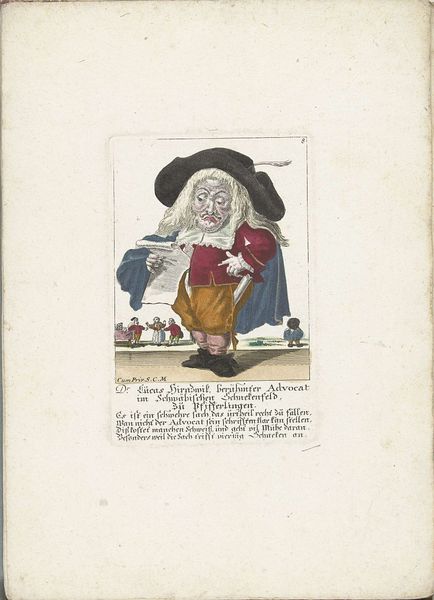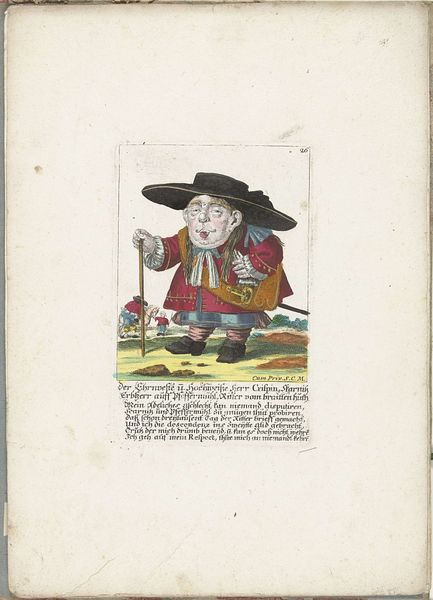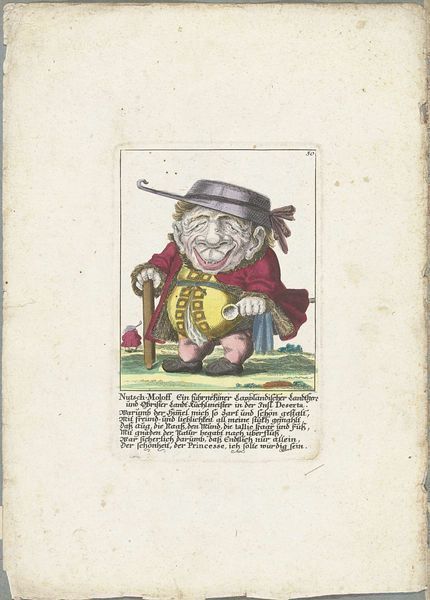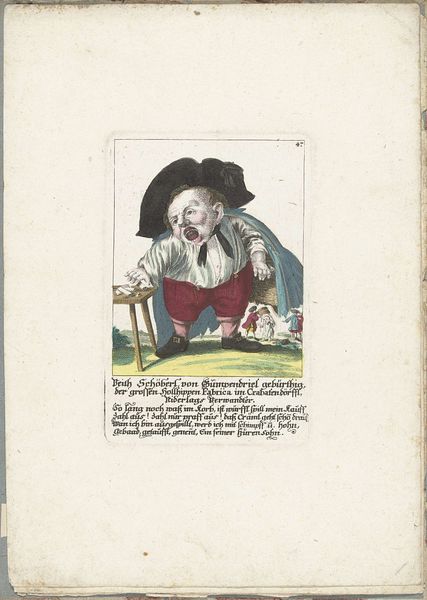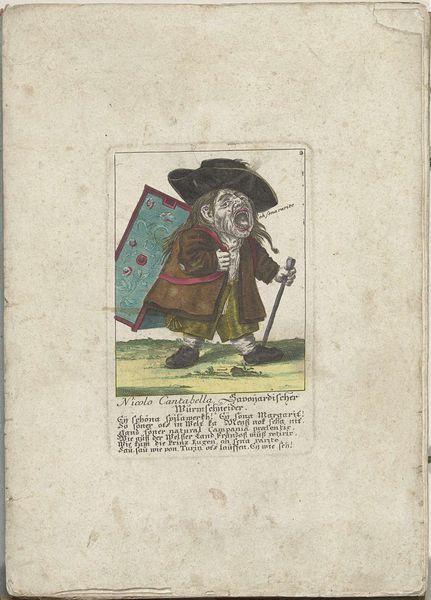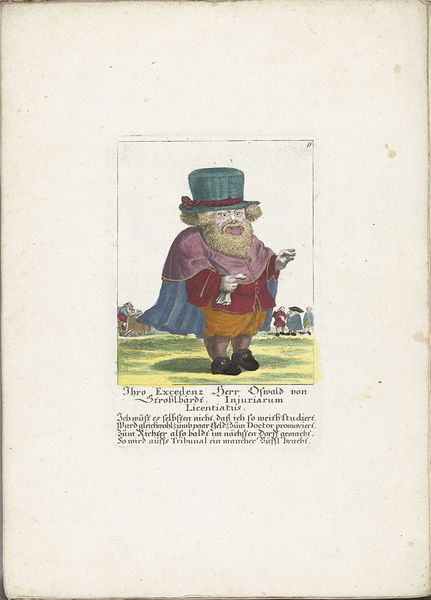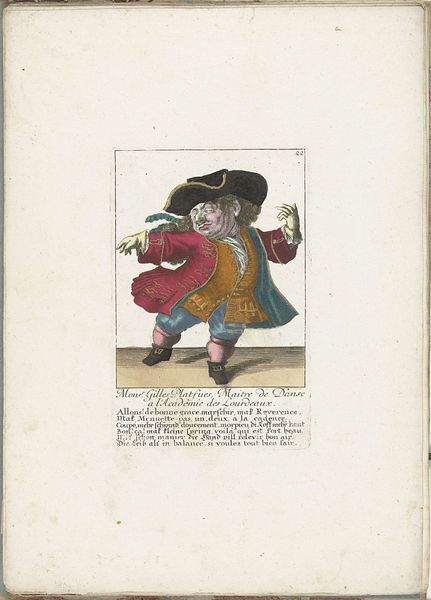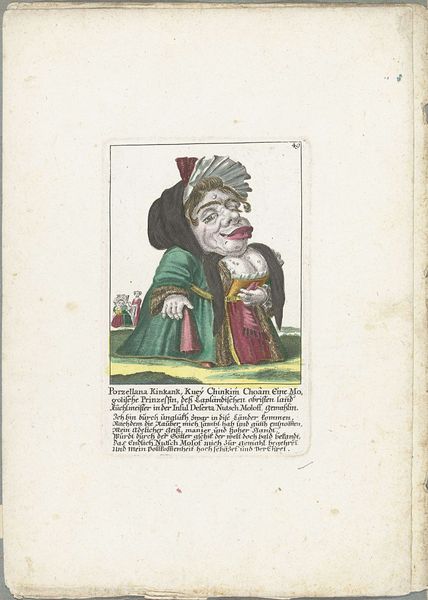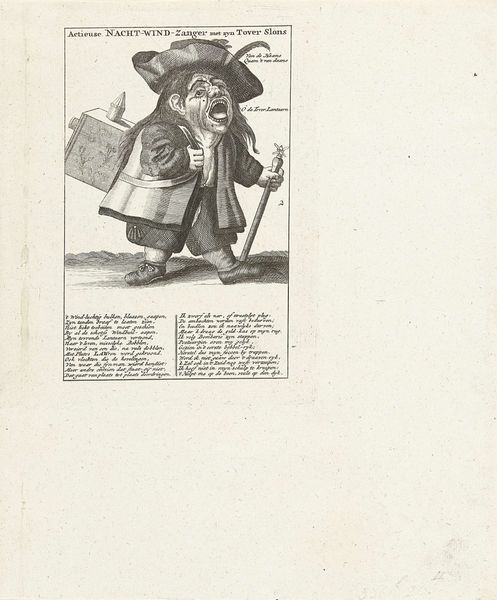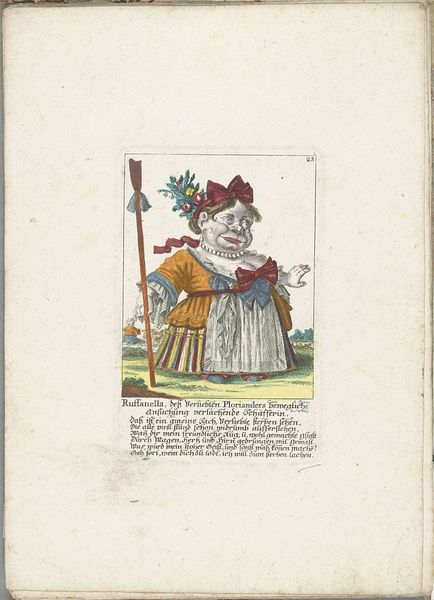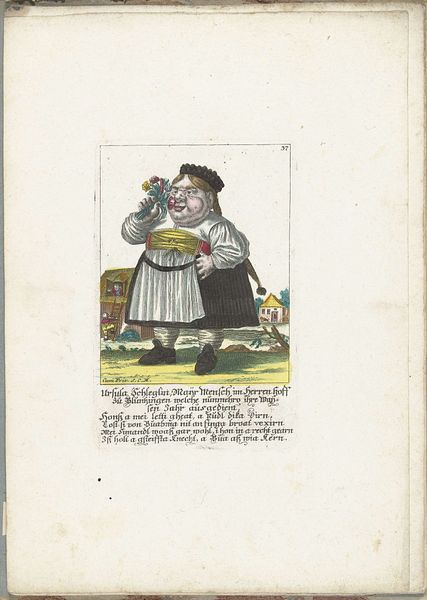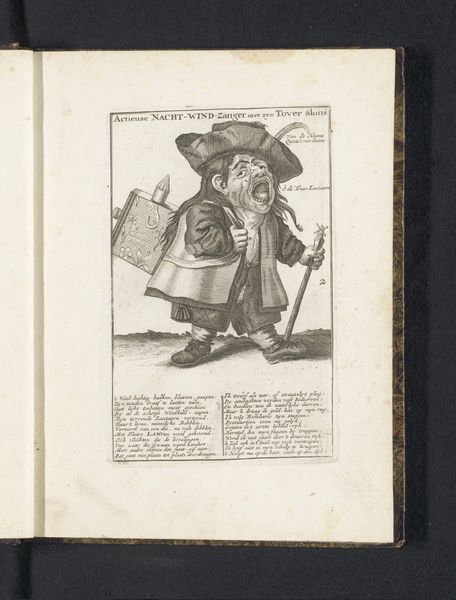
drawing, print, etching, intaglio, paper
#
portrait
#
drawing
#
baroque
# print
#
etching
#
caricature
#
intaglio
#
paper
#
11_renaissance
#
genre-painting
#
academic-art
#
miniature
#
watercolor
Dimensions: height 170 mm, width 110 mm, height 320 mm, width 225 mm
Copyright: Rijks Museum: Open Domain
Curator: Here we have "The Dwarf Blasius Rauchmantl as Alchemist" created around 1710 by Martin Engelbrecht, preserved as an etching at the Rijksmuseum. It's wonderfully detailed. Editor: My first thought is it's unexpectedly sympathetic, despite what seems like caricature. There's a kind of resigned focus on the face, a bit of melancholy. Curator: The image immediately struck me with its use of archetypal alchemical symbols and gestures. Rauchmantl, even with his exaggerated features, evokes a specific cultural idea of the alchemist—the hat, the oversized spectacles, and the fire suggesting transformation. He's trying to turn base metals into gold, literally or metaphorically. Editor: Right, but I read the caption as satirical; “Quintessence of Fools” seems to imply a commentary on the social role of alchemists more broadly. Were they considered pseudo-scientists, preying on people's desperation for wealth and quick solutions? I see him in terms of historical context as commentary on class, ambition, and possibly prejudice. Curator: That’s fascinating, because caricature, here, serves to amplify rather than diminish Rauchmantl’s agency. He is in control, manipulating elements, searching for truth—the “quintessence” which is usually presented as the key to immortality. So, although there might be foolery associated, it's interwoven with potent ambition. Perhaps Engelbrecht questions rigid social roles? Editor: Maybe. Or perhaps it shows how power is distributed and visually presented. His clothing is poor, yet he performs activities previously accessible only to the aristocracy, demonstrating both upward mobility and social anxieties linked to it. Curator: True. He reflects shifting societal lines that began during this era. There's this tension, visible through his posture and props. We both have to ask whether he succeeds, or are we witness to failed aspiration frozen in ink and paper. Editor: Exactly! Thanks for the context on both the iconography and archetypal ideas, especially on a symbolic figure still meaningful today. Curator: And your comments illuminate those very questions about power. This work invites endless inquiry into human aspiration.
Comments
No comments
Be the first to comment and join the conversation on the ultimate creative platform.
